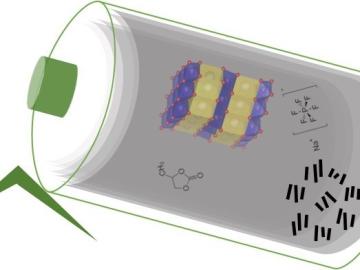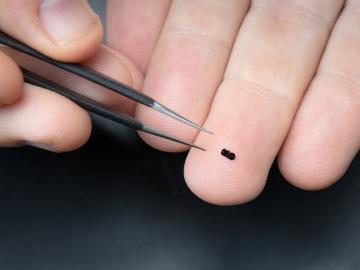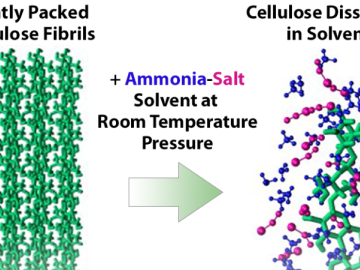
Filter News
Area of Research
- Advanced Manufacturing (1)
- Biological Systems (1)
- Biology and Environment (8)
- Computer Science (2)
- Energy Science (32)
- Fusion and Fission (4)
- Fusion Energy (9)
- Materials (18)
- Materials for Computing (1)
- National Security (5)
- Neutron Science (32)
- Nuclear Science and Technology (15)
- Nuclear Systems Modeling, Simulation and Validation (1)
- Quantum information Science (3)
- Supercomputing (11)
News Type
News Topics
- (-) Advanced Reactors (16)
- (-) Bioenergy (12)
- (-) Environment (32)
- (-) Fusion (16)
- (-) Grid (10)
- (-) Nanotechnology (8)
- (-) Neutron Science (34)
- 3-D Printing/Advanced Manufacturing (25)
- Artificial Intelligence (16)
- Big Data (18)
- Biology (6)
- Biomedical (20)
- Biotechnology (2)
- Chemical Sciences (2)
- Clean Water (6)
- Composites (2)
- Computer Science (57)
- Coronavirus (16)
- Cybersecurity (4)
- Energy Storage (22)
- Exascale Computing (4)
- Frontier (1)
- High-Performance Computing (1)
- Isotopes (4)
- Machine Learning (9)
- Materials Science (31)
- Mathematics (2)
- Mercury (2)
- Microscopy (8)
- Molten Salt (2)
- Nuclear Energy (37)
- Physics (12)
- Polymers (4)
- Quantum Science (11)
- Security (2)
- Space Exploration (5)
- Summit (16)
- Transportation (20)
Media Contacts

Each year, approximately 6 billion gallons of fuel are wasted as vehicles wait at stop lights or sit in dense traffic with engines idling, according to US Department of Energy estimates.

Researchers at ORNL demonstrated that sodium-ion batteries can serve as a low-cost, high performance substitute for rechargeable lithium-ion batteries commonly used in robotics, power tools, and grid-scale energy storage.

A novel approach developed by scientists at ORNL can scan massive datasets of large-scale satellite images to more accurately map infrastructure – such as buildings and roads – in hours versus days.

The prospect of simulating a fusion plasma is a step closer to reality thanks to a new computational tool developed by scientists in fusion physics, computer science and mathematics at ORNL.

Liam Collins was drawn to study physics to understand “hidden things” and honed his expertise in microscopy so that he could bring them to light.

Researchers have developed a new process that could make it much cheaper to produce biofuels such as ethanol from plant waste and reduce reliance on fossil fuels.

Nuclear scientists at Oak Ridge National Laboratory have established a Nuclear Quality Assurance-1 program for a software product designed to simulate today’s commercial nuclear reactors – removing a significant barrier for industry adoption of the technology.

To better determine the potential energy cost savings among connected homes, researchers at Oak Ridge National Laboratory developed a computer simulation to more accurately compare energy use on similar weather days.

Illustration of the optimized zeolite catalyst, or NbAlS-1, which enables a highly efficient chemical reaction to create butene, a renewable source of energy, without expending high amounts of energy for the conversion. Credit: Jill Hemman, Oak Ridge National Laboratory/U.S. Dept. of Energy

As scientists study approaches to best sustain a fusion reactor, a team led by Oak Ridge National Laboratory investigated injecting shattered argon pellets into a super-hot plasma, when needed, to protect the reactor’s interior wall from high-energy runaway electrons.


